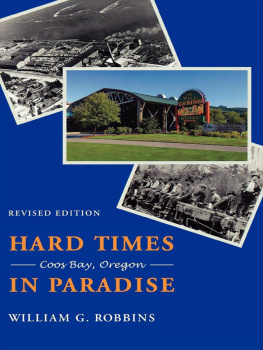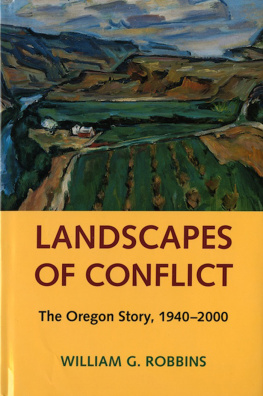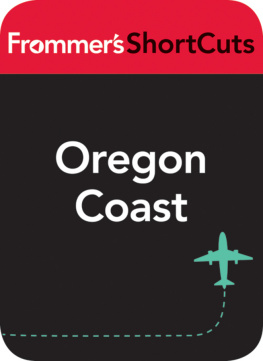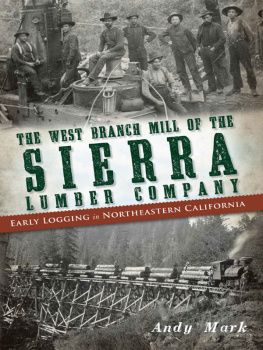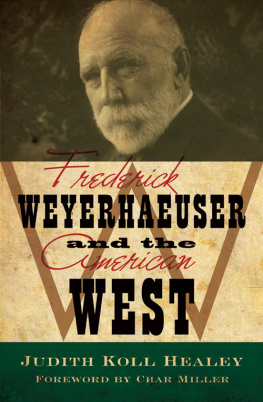CHAPTER 1
Poor Man's Paradise
Coos Bay as the place is called, is shut out from the rest of the world, and forced more or less to rely on its own resources.
Marjory K. Cowan, 1913
As the imperial center of a nineteenth-century western trading network that extended the length of the Pacific Coast, the city of San Francisco developed a voracious appetite for a great variety of goods and raw materials. Ships carrying New England textiles, British manufactures, and silks, spices, and fineries from the Orient entered the rapidly expanding commercial port. In many respects San Francisco was an entrepreneur's dreamat least for the capitalists who provided goods and services to the city and who outfitted and supplied the gold seekers who swarmed through the gullies and hills of the hinterland. To transform that community of tents into a permanent settlement and to provide structural materials for the camps and mines in the interior also required vast amounts of timber. In answer to that need, a thriving lumber trade developed in the 1850s.
Only the gamblers, the bold and venturesomeand those with capitalmade the effort. Frederick Pope and William Talbot, whose families had been in the lumber business since the American Revolution, sailed a shipload of lumber from their native Maine to San Francisco to test the possibilities of establishing a regular trade. Although the long ocean voyage around Cape Horn was discouraging, the lush forests along the North Pacific Coast quickly suggested other possibilities to the enterprising Yankees. Sailing north in 1852, Pope and Talbot built a sawmill at Port Gamble on Hood Canal near Puget Sound and thereby established one of the first satellite lumbering towns to serve the California trade. Similar circumstances attracted the first entrepreneurs to the Coos Bay estuary on the southern Oregon coast.
Ties of capital, trade, and culture linked communities like Port Gamble and the early Coos Bay settlements to the economic network extending outward from San Francisco. Coos Bay's geographic isolation from the main centers of population and commerce in Oregon enhanced its link with California's preeminent metropolis. Henry Heaton Luse and Asa Mead Simpson, early sawmillers on the bay, established a sea-oriented traffic in lumber by the late 1850s that set a And we should not be surprised by their attraction to the area.
The huge timber stands and other natural attributes along the southern Oregon coast impressed newcomers. A visitor to the bay observed in 1853 that the harbor was certain and safe, and that the area abounded with coal and timber of the finest quality in Oregon. As a commercial point and depot, it is second only to San Francisco on the Pacific coast. Another traveler that year reported an abundance of the white cedar timber, well calculated for lumber. With its extensive coal banks, the visitor reflected, Koose Bay was destined to be a place of great importance.
The first crude lumber manufacturing set up on Coos Bay was a two-man whip-saw mill in 1853. Daniel Giles, age seventeen and robust with energy, pulled one end of the saw: Being young and stout, I stayed with it for a while and when I wanted to quit and go to mining, they insisted on me taking a third interest in the business. We sawed all winter. The same year, a water-powered Muley sash saw began operating on the Coquille River, a short distance to the south of Coos Bay. George B. Wasson, a native of New Brunswick who came to California to search for gold, was part owner of the operation and used oxen to haul logs to the mill. But the productive capacity of those water- and human-powered operations was limited. It was left to others, especially the steam-powered Luse and Simpson operations on Coos Bay, to capitalize on the California lumber market.
For the first thirty years of white settlement, coal and lumber exports sustained the area's economy and established patterns of contact with the outside world. California entrepreneurs provided the capital for investments in mining ventures, and although a few local businessmen engaged in those activities in the early years, San Francisco capitalists dominated the Coos Bay economy by 1875. From an early period, therefore, outside investors controlled the exploitation of resources on the south coast.
Asa Mead Simpson, a California lumberman and shipbuilder, set the tone for the colonial link between the Coos country and San Francisco Bay. During the 1850s Simpson established sawmills in several coastal estuaries, including the small operation on Coos Bay in 1856. That sawmill dominated the local economy for several decades and was part of a chain of mills that extended from Santa Cruz to Puget Sound. In addition to retail outlets in California, Simpson operated a shipyard on Coos Bay that turned out an impressive number of cargo ships. By the 1880s the Simpson plants along the
Investment capital and marketing outlets spelled the difference between success or failure for those early sawmilling ventures on Coos Bay. The same could be said for the entrepreneurs who wanted to tap the rich veins of coal that underlay the surrounding hills. But for the most part speculation in coal proved to be a great chimeraeven for investors from outside the region. The quality of the coal was poor (high moisture and low sulfur content), and exports provided an unsteady market at best. Although the industry attracted capital and laborers to the bay, the value of coal shipments ranked behind lumber by the early 1880s.
Like the early sawmilling activities, the first coal-mining ventures were small operations and employed only a few people. Moreover, Coos Bay was only one of several places along the Pacific Coast where coal was discovered. Patrick Flanagan, an Irish immigrant with capital and credit, successfully mined coal in the Coos Bay area for thirty years. According to his son, who was born in one of the mining towns, promoters would organize companies, sell stock, or induce men to jump into the venture without adequate investigation. They spent money recklessly for buildings, bunkers, ships, tools, and equipment only to find in too many cases and too late that the vein was broken, or the coal was of an inferior grade, or mining conditions were unfavorable. Although a few investors profited, the freight charges to San Francisco ruined many of those who speculated in coal.
To establish the business on a regular basis an operator needed capital, transportation facilities, and marketing outlets. And luck and ingenuity! Patrick Flanagan lived at his Libby mine and kept a watchful eye on its activities; his partner operated the company store and took measures to assure that paychecks were recycled on the spot. The Libby operation had storage facilities on Coos Bay, marketing outlets in San Francisco, and at the peak of its operation in the 1880s, employed 350 workers.
But that locally owned operation passed into the hands of nonresidents when Patrick Flanagan and his partner sold the Libby mine to San Francisco investors in the mid-1880s. Stephen Beckham, who has written extensively about his native Coos Bay, concludes that coal mining by the 1870s was definitely in the control of men of means. Nor were the entrepreneurs permanent residents of the bay, for the capital that moved into the region to develop new mining prospects
But those mining and sawmilling ventures helped line the shores of the Coos estuary with family dwellings and the makings of small communities. Although the record is spare, the annual coal shipments across the Coos Bay bar fluctuated wildly from one year to the nexta fact that did not bode well for the men and women who depended on coal exports for their livelihood. The 44,857 short tons exported in 1874 fell to 16,000 tons in 1883 and did not surpass the 1874 figure until 1886, when operators shipped 51,595 tons. Thereafter, outbound shipping statistics show the same dramatic annual shifts until 1905, when coal exports from the bay began a steady decline, a reflection of the increasing use of fuel oil in the larger population centers.

